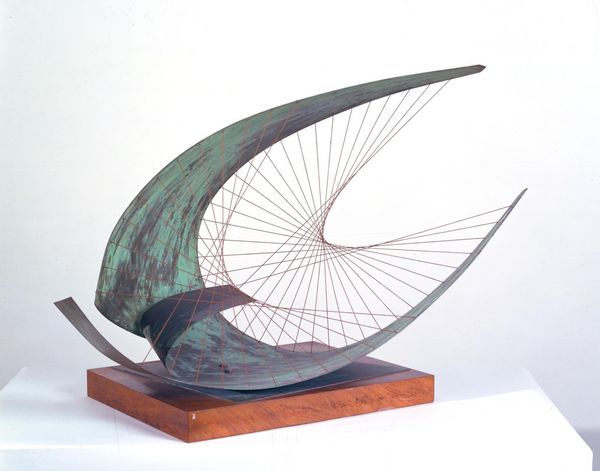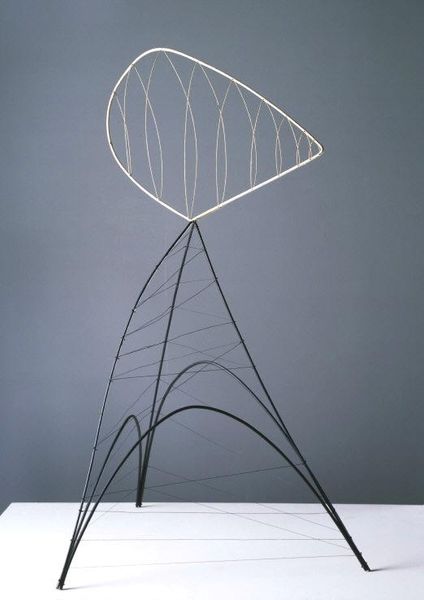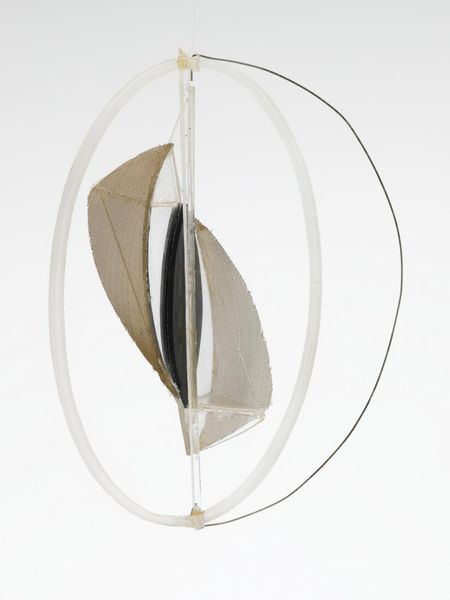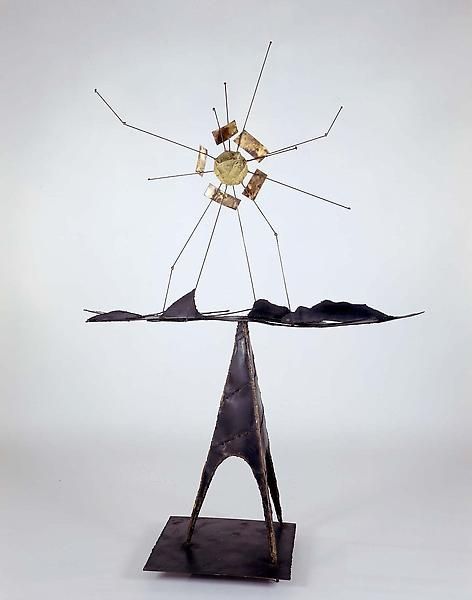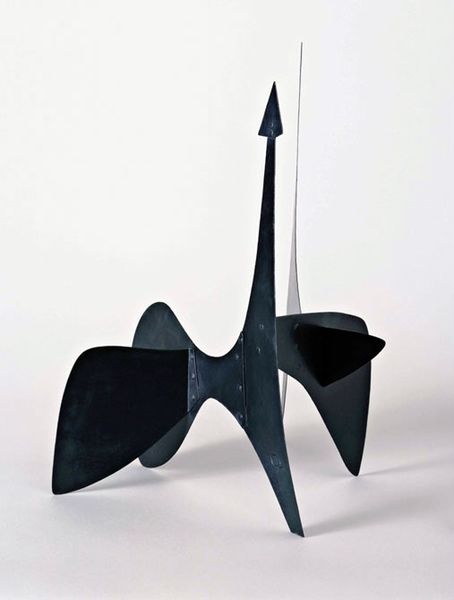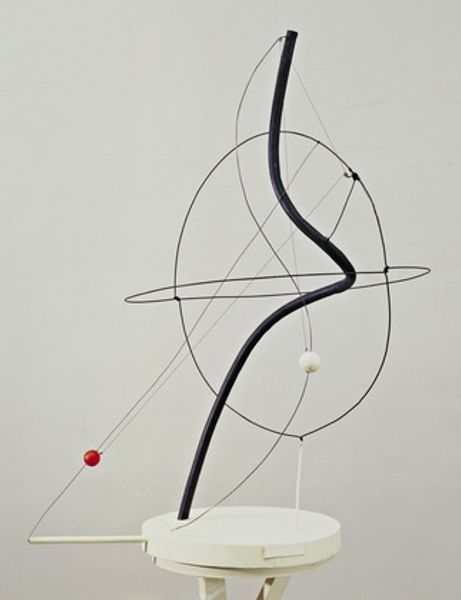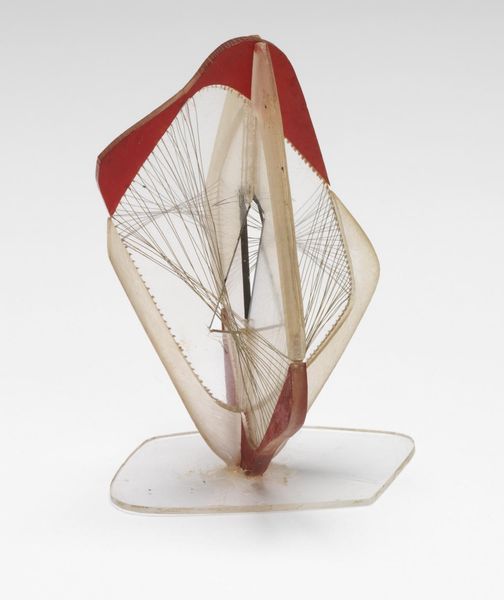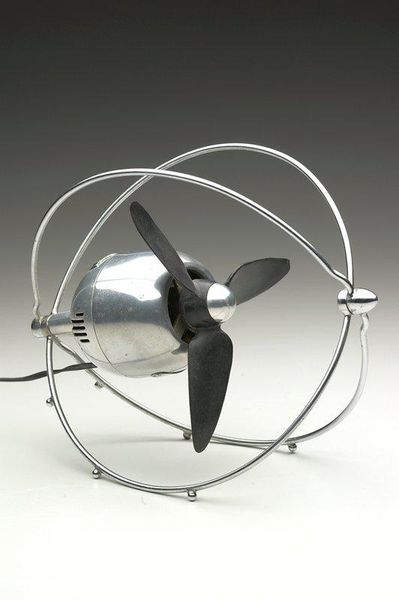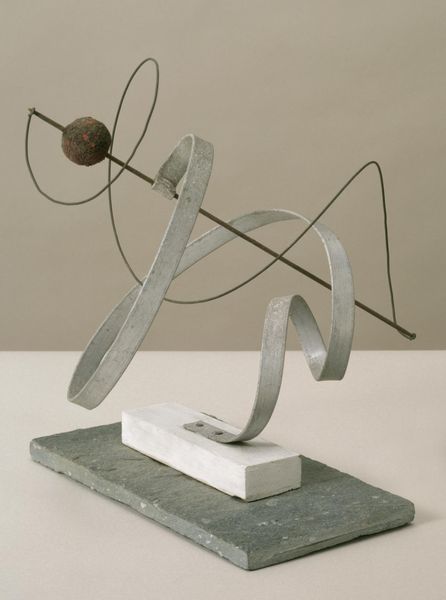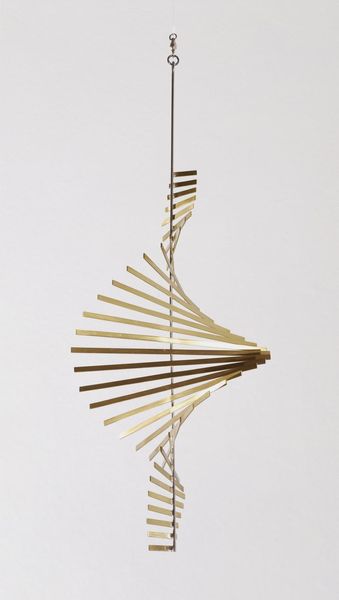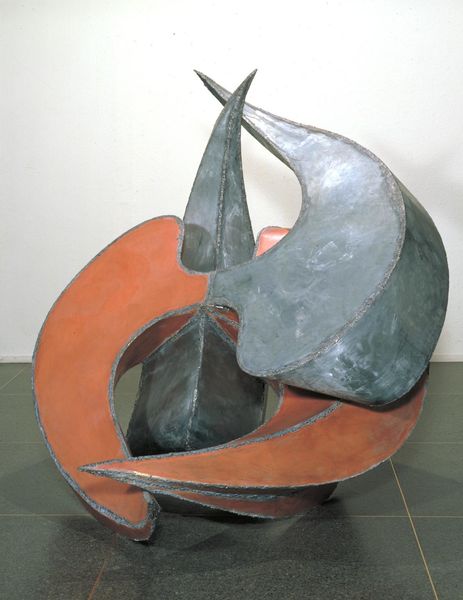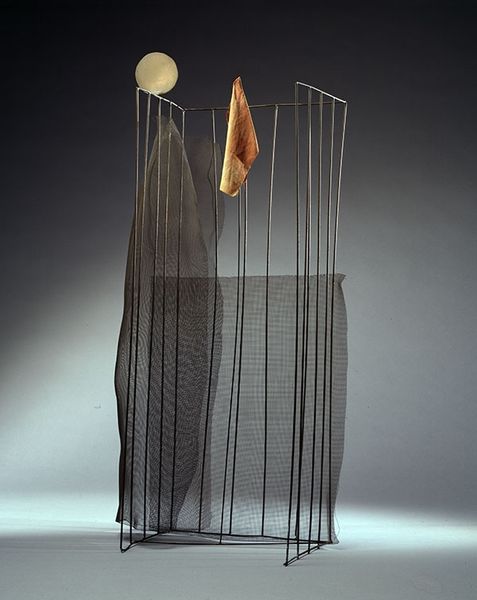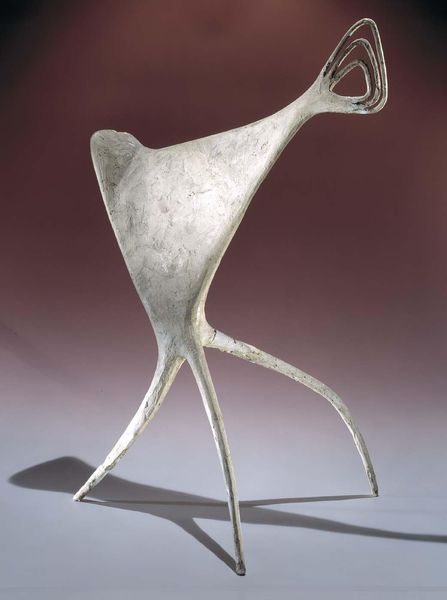
Dimensions: object: 1149 x 432 x 415 mm
Copyright: © Bowness, Hepworth Estate | CC-BY-NC-ND 4.0 DEED, Photo: Tate
Curator: Right, let’s look at Barbara Hepworth’s "Orpheus (Maquette 2) Version II", currently housed in the Tate Collections. Editor: Wow, it’s like a stringed instrument exploded into abstract form, suspended in mid-air, so delicate. Curator: Indeed, this piece reflects Hepworth's broader engagement with mythology, particularly the story of Orpheus, often interpreted through the lens of gender and power dynamics. The strings create a visual dialogue. Editor: It's like she's trying to capture sound visually, the ghost of a harp's melody, perhaps? I'm intrigued by the base—it grounds the ephemeral nature of the upper form, a quiet strength holding up the song. Curator: A fascinating contrast – the groundedness and the ethereal quality of the sculpture. It could symbolize the tension of Orpheus' journey between worlds, and the limitations placed on female artists at the time. Editor: It’s a poignant dance between what’s held and what’s released, isn't it? Makes you wonder what songs went unsung.
Comments
tate 6 months ago
⋮
http://www.tate.org.uk/art/artworks/hepworth-orpheus-maquette-2-version-ii-t00955
Join the conversation
Join millions of artists and users on Artera today and experience the ultimate creative platform.
tate 6 months ago
⋮
In the 1950s Hepworth found new ways to make abstract sculpture. Having previously concentrated on carving, she began using sheet metal and string. Many artists at the time looked to her work as an endorsement of their own abstract work. However, Hepworth’s sculptures always followed the geometric rules that they favoured. The form and the title of this work (which references ancient Greek musician and poet Orpheus), bring together ideas of a harmony between modern technology, musical composition and Greek myth. Gallery label, April 2019
